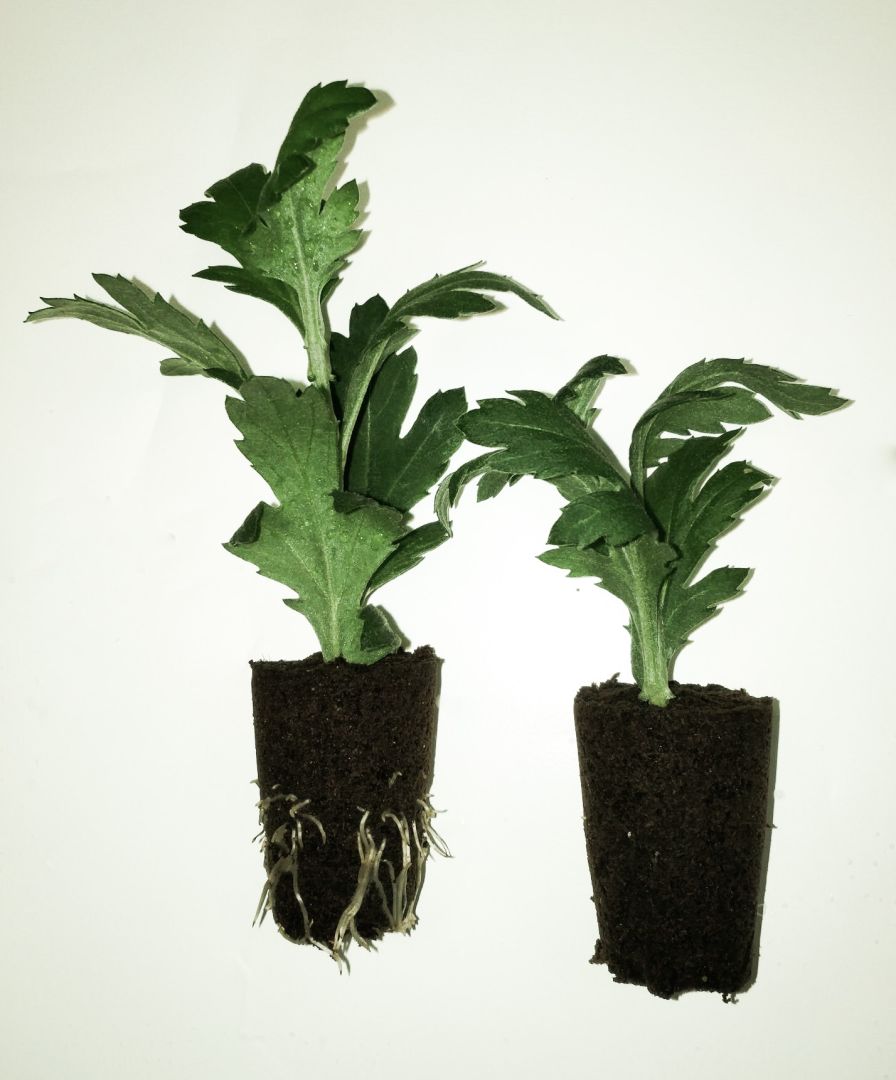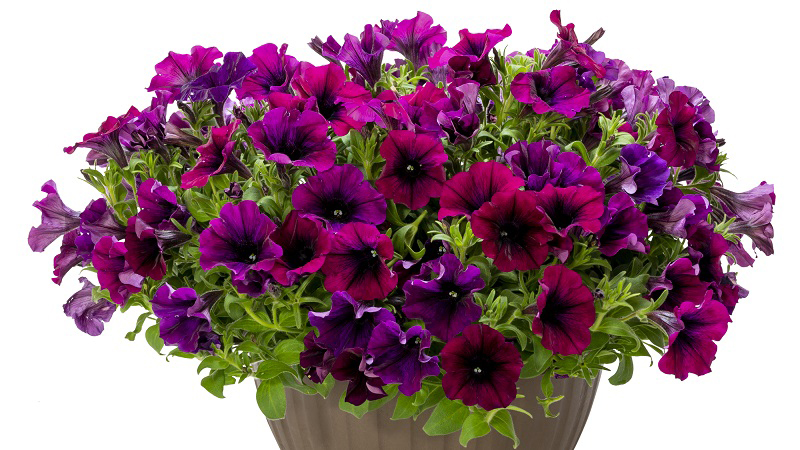How to Improve the Vigor of Cuttings With Smart Lighting Solutions

Chrysanthemum cuttings response to different lighting spectrums. Left: dynamic lighting with far-red, Right: standard static recipe. Photo: Dr. C. Nicole, Philips
Propagation of cuttings comes with hassles, but new smart lighting systems can help, increasing consistency and vigor. Lighting solutions have come a long way from mechanical timers turning high-pressure sodium (HPS) lights on and off. LED technology has become more refined, performance has increased, and new opportunities to take advantage of LEDs’ unique benefits are here.
“LEDs are becoming the standard technology for propagation,” explains Dr. Erik Runkle of Michigan State University. How important is good lighting for propagation? Dr. Runkle says, “Light and temperature primarily drive the rate of root development.”
What Is Smart Lighting?
Smart lighting is a system, including the lights, sensors, and controllers, able to adjust light quality (spectrum), intensity, and quantity. LEDs, specifically fully-tunable LEDs, typically provide lighting. Some systems use a hybrid LED-HPS system to attain the tunable benefits of LED technology.
To be of the highest benefit for rooting cuttings, smart lighting should include not only the Photosynthetic Active Radiation (PAR) spectrum of 400-700 nm but also, and importantly, the far-red spectrum, says Dr. Céline Nicole-de Groot, Senior Plant Scientist, Philips LED Horticulture Solutions, by Signify.
“For propagation, we have found that it’s important to be able to adjust the red, blue, green, and far-red channels independently,” she says.
Smart lighting enables full-spectrum, tunable LEDs to be networked with computerized controllers to create custom recipes that integrate light levels, day length, fade in or out, and spectrum controls. These recipes are adjustable from one propagation phase — just stuck, for example — to another phase like finishing the liners for sale.
The Importance of Light to Cutting Rooting and Vigor
Too little light and rooting is impaired, but too much light stresses the cutting. Typically, cuttings are exposed to a lower quantity of light after being stuck and can handle a much higher light level after rooting has occurred. While the PAR wavelengths are important, the far-red portion of the spectrum can have significant results on adventitious rooting of cuttings. Far-red light is radiation with a wavelength between 700-800 nm. Dr. Runkle says the waveband between 700 and 750 nm is of most interest because of its potential to increase plant growth.
Medicinal cannabis, where synthetic auxins are sometimes not allowed by regulation, are seeing significantly increased rooting and vigor when using LED light recipes to adjust the red/far red ratio for stem cuttings, says Dr. Nicole. Floriculture applications are being researched, with promising findings.
The Case for Shifting to a Smart Lighting Solution
“There is a definite gain in performance switching from HPS to hybrid or full LED. As a lighting company selling both types of lamps, we have all the technical data and in situ measurements available for HPS, hybrid and full LED situations,” says Dr. Nicole. “For a grower having a large collection of species and cultivating those in parallel, it is handy to be able to adjust for each the best light level and spectrum, as different cultivars may need a different spectrum. If environmental factors such as lighting are not well controlled, rooted cuttings have different rates of success in terms of percent of rooted cuttings, time to root formation, or quality of the roots formed.”
Dr. Runkle finds that for growers not using artificial lighting for propagation, shifting to a smart LED solution can be amazing. During the winter and early spring, the no-light to light jump can mean a drop in propagation time of 10 to 14 days, depending on other factors.

The Philips GrowWise Control System allows growers to create their own lighting recipes. Photo: Signify
Smart LED systems are dimmable and become more efficient at generating light when running at less than full power. Dimming also maintains lighting uniformity across the grow space instead of “checkerboarding” the lights by turning some off when not needed. Smart LED systems can also avoid peak electricity rates or be programmed to reduce consumption during those portions of the day.
Lower energy bills and return on investment (ROI) in two to three years, with a bulb life of 30,000 to 50,000 hours, means you are making money after the first couple of years, insulating your operation against rising energy costs, and growing a more compact, vigorous liner or plug, says Dr. Runkle.
Less heat means more control over environmental conditions, lowering ventilation needs in warmer seasons and potentially keeping more CO2 in-house. However, factor in that heating needs may rise in cool seasons absent the heat normally given off by HPS lights.
While initial capital outlay to install or switch to a smart LED system is higher than other lighting types, longer lamp life and reduced maintenance costs help to reduce the bill over time. HPS lamp bulbs are recommended to be replaced annually, although some growers don’t. The typical LED lighting fixture’s useful working life is 30,000 to 50,000 hours and doesn’t require much maintenance, with no reflectors to clean and no bulbs to change.
Smart LED lighting systems improve the vigor and success of propagation using cuttings and can continue to offer benefits for growing crops to maturity. Growers don’t have to go it alone. Many suppliers provide financing options as well as technical support and customized LED lighting recipes. Depending on your location, rebates may also be available, making the case for installing smart LED lighting even easier.








